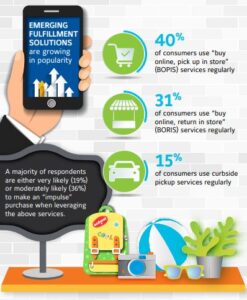Sensormatic Solutions released the results of its 2020 Consumer Shopping Trends survey of more than 1,100 consumers. The survey revealed that by an overwhelming majority, 64% of consumers still prefer to engage with in-store associates, 30% prefer a retailer’s mobile app, and only 5% prefer robot assistants.
While consumers prefer to connect with humans for in-store assistance, they don’t think it’s necessary at the point of sale (POS). Over half (55%) of consumers said they “always” or “usually” use self-checkout to make a purchase in-store. Additionally, those who shop more frequently are more likely to use self-checkout. Findings revealed 30% of everyday shoppers “always” use self-checkout, compared to 17% of those who only shop a few times a week.
“There is a growing dialogue that technology will replace the need for face-to-face interactions, but that is not necessarily the case,” said Bjoern Petersen, president at Sensormatic Solutions. “While there is no denying that technology and automation are helping businesses streamline processes and decision making, our survey proves that traditional customer engagement continues to be a preferred choice.”
The survey also explored the rise in consumer adoption of emerging fulfilment services such as buy online, pick up in store (BOPIS) and buy online, return in store (BORIS). Nearly half (40%) of consumers use BOPIS regularly, followed by BORIS (31%) and curbside pickup (15%). Thirty-six percent of consumers don’t use any of these services on a regular basis.

When leveraging these services, many respondents found themselves making “impulse purchases,” (buying something they didn’t intend to before entering the store). Over half of consumers (55%) were either very likely or moderately likely to make an impulse purchase when using these multichannel fulfilment services. To view the shopping trends survey infographic, click here.
“One of the key benefits of adopting BOPIS is that it drives more in-store traffic and potentially higher sales,” said Petersen. “That’s why inventory accuracy and availability is essential for today’s retailers. To capitalize on this and deliver a seamless omnichannel customer experience, we see retailers invest in technology, like RFID, that eliminates manual inventory counting and frees up associates for more strategic work, like engaging with shoppers on the store floor.”